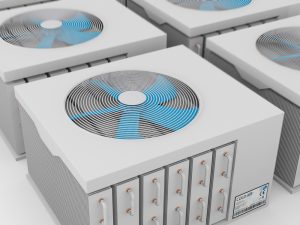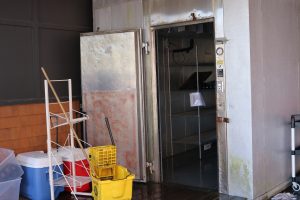
Knowledge Base / News
 We introduced the patent-pending and award-winning Digital Active Power w/Temperature Sensor in mid-2017, and since then it has quickly become one of our most popular sensors. In fact, it was requested so often that we decided to include it with all Room Alert 12E/12ER and Room Alert 32E monitors that we sell.
We introduced the patent-pending and award-winning Digital Active Power w/Temperature Sensor in mid-2017, and since then it has quickly become one of our most popular sensors. In fact, it was requested so often that we decided to include it with all Room Alert 12E/12ER and Room Alert 32E monitors that we sell.
When we first introduced the Digital Active Power w/Temperature Sensor, we discussed how it was designed to monitor servers and sensitive equipment in data centers. One of our users approached us with the dilemma of needing to monitor the power status of hundreds of servers in their data center, and those servers needed to remain up and running; there was no opportunity to unplug them to install power monitors. Addressing that situation is what led to the introduction of the Digital Active Power w/Temperature Sensor to the market.
Data center owners and operators represent a large percentage of our user base, however we’ve heard some interesting use cases for the Digital Active Power w/Temperature Sensor in other industries that we wanted to share. Hopefully these examples will show you just how many places the Digital Active Power w/Temperature Sensor can help protect your organization against environment-related downtime.
 One of the biggest environmental threats to data center downtime is high temperature and humidity. Temperature sensors help alert Room Alert users to temperature ranges that can lead to server failure and data loss, and some of our users have reported installing Digital Active Power w/Temperature Sensors on their HVAC equipment to notify them if they are no longer receiving power.
One of the biggest environmental threats to data center downtime is high temperature and humidity. Temperature sensors help alert Room Alert users to temperature ranges that can lead to server failure and data loss, and some of our users have reported installing Digital Active Power w/Temperature Sensors on their HVAC equipment to notify them if they are no longer receiving power.
HVAC failure is one of the leading causes of rising data center temperatures, so being alerted that HVAC units are no longer powered helps provide an extra layer of notifications to prevent data center downtime.
On the opposite end of the spectrum, users in colder regions are using the Digital Active Power w/Temperature Sensor to monitor HVAC units for heating as well. Frozen pipes have led to countless water leak situations that have been reported recently, and ensuring that your heating units are up and running goes a long way to protecting facilities against water damage (installing flood sensors doesn’t hurt, either!).
Keeping an eye on the power status of your HVAC equipment can also help save money. One of our customers noticed that a larger HVAC unit was cycling on and off repeatedly; this was causing a huge drain on their power facilities. They instructed their maintenance crew to clean up that unit while also taking some proactive maintenance steps. The unit began cycling far less frequently, which helped lower its power consumption as well as reducing the wear and tear on critical components of the HVAC unit.
Flooded basements can be headache for homeowners and building facility managers alike. That’s why knowing that your sump pump is hard at work during wet, rainy weather to keep your building dry. Mold, structural damage, and losing personal items or business equipment/paperwork are all risks when water enters a facility, making sump pumps essential to keep things dry.
More than a few of our users have let us know that they attached the Digital Active Power w/Temperature Sensor to their sump pump to notify them when it cycles on and off; if no alerts come through during a heavy storm, it’s time to take a look to make sure the pump is working properly
 Restaurants, grocery stores, and laboratories/medical facilities have hundreds of thousands of dollars in stock items stored in refrigerators and freezers onsite. If those units were to lose power, or stop working, the product lost could be catastrophic. Monitoring for temperature certainly helps notify of problems, and we’ve had users let us know that they’re using the Digital Active Power w/Temperature Sensor to monitor power status of their units.
Restaurants, grocery stores, and laboratories/medical facilities have hundreds of thousands of dollars in stock items stored in refrigerators and freezers onsite. If those units were to lose power, or stop working, the product lost could be catastrophic. Monitoring for temperature certainly helps notify of problems, and we’ve had users let us know that they’re using the Digital Active Power w/Temperature Sensor to monitor power status of their units.
Monitoring cold storage units for power helps to send instant notification if power is lost to the unit for any reason, which means that action can be taken well before temperatures start rising to levels that can cause spoilage. A campus laboratory at one of our university customers installed the Digital Active Power w/Temperature Sensor on a number of their refrigerators, and a few weeks later received notification close to midnight that one of their units was no longer receiving power. They were able to quickly move the samples they were storing into another unit, saving them countless hours that they had spent developing those samples.
Many of our users know that they need to monitor their facility as part of their business continuity plan. When you invest hundreds of thousands of dollars (if not more) into your facility, network, and equipment, it only makes sense to protect it against the environment factors that cause almost 30% of downtime incidents. Taking the Digital Active Power w/Temperature Sensor outside of the data center environment not only helps to increase your organization’s uptime, it can also help save you money.
If you have questions about how Room Alert monitors and the Digital Active Power w/Temperature Sensor can help protect your facility, please let us know! We’ll be happy to show you how you can stay protected, and have peace of mind knowing that you’ll be alerted to any environmental factor that might cause downtime for your organization.

You may find Windows Command Prompt at the following path:
To run Windows Command Prompt as an administrator:
| Current S models | Current E models |
|---|---|
| Room Alert 32S | Room Alert 32E |
| Room Alert 12S | Room Alert 12E |
| Room Alert 3S | Room Alert 4E |
| Room Alert 3E | |
| S models | E & W models |
|---|---|
| Room Alert 32S | Room Alert 32E |
| Room Alert 12S | Room Alert 12E |
| Room Alert 3S | Room Alert 4E |
| Room Alert 3E | |
| Room Alert 3W |
| Model |
|---|
| Room Alert MAX |
| Room Alert 32S |
| Room Alert 12S |
| Room Alert 3S |
| Room Alert 32E/W |
| Room Alert 12E |
| Room Alert 4E |
| Room Alert 3E |
| Room Alert 3 Wi-Fi |